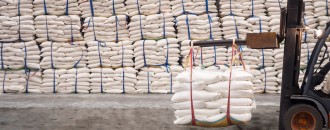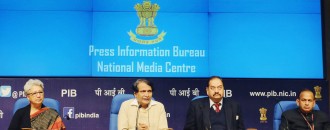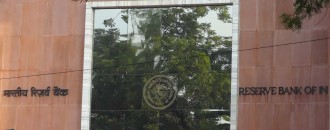
RBI cuts repo rate by 25 bps to 6.5%; keeps CRR unchanged
The Dollar Business Bureau
The Reserve Bank of India (RBI) has reduced the repo rate, also called the repurchase rate, under the liquidity adjustment facility (LAF) by 25 basis points to 6.50% from its earlier 6.75%.
In the first bi-monthly monetary policy review for the financial year 2016-17, RBI Governor Raghuram Rajan on Tuesday said the decision was taken in the backdrop of the current and evolving macroeconomic situation.
The Indian banking body also lowered down the minimum daily maintenance of the cash reserve ratio (CRR) by 5 percentage points to 90% from 95%, while leaving the CRR unchanged at 4% of net demand and time liabilities (NTDL). The change will come into effect from April 16, 2016.
The reverse repo rate, at which banks park their excess funds with the RBI, was also cut down to 6%, contracting the policy corridor to 50 bps by increasing the reverse repo rate by 25 basis points and by reducing the MSF rate by 75 basis points.
“Consequently, the reverse repo rate under the LAF stands adjusted to 6.0% and the marginal standing facility (MSF) rate to 7.0%. The Bank Rate which is aligned to the MSF rate also stands adjusted to 7.0%,” RBI said in a statement.
Underlining that the rate cut will boost the Indian economy, MoS Finance Jayant Sinha tweeted: “We believe that with rate cut that has been affected, it will be a really good stimulus for the economy.”
Several Indian and global institutions had earlier projected an interest rate cut of 25 basis points. On Tuesday, the institutions as well as industries expressed their mixed reactions on the rate cut and said the decision was taken largely keeping in mind India’s inflation, which is expected to be around 5% through the end of the fiscal year.
“The 25 basis point cut in the Reserve Bank of India’s main policy interest rate was in line with expectations by market participants. The RBI expects inflation to remain around 5% through the end of the fiscal year. Moderate growth in India, spare capacity in industry and low global commodity prices will help maintain inflation around the current levels,” said Marie Diron, Senior Vice President, Sovereign Risk Group, Moody’s Investors Service.
The Associated Chambers of Commerce & Industry of India (ASSOCHAM), however, said the rate cut fell short of the industry’s expectations and it should have been reduced by least 50 basis points.
“Given the kind of stress in large sectors of the economy, particularly in the manufacturing, construction and infrastructure, the policy interest rates cut should have been bolder,” said Sunil Kanoria, President, ASSOCHAM.
The RBI Governor, in his last bi-monthly policy review for the financial year 2015-16, had kept the key rate unchanged stating that he would wait for the Finance Minister Arun Jaitely to present his Union Budget for the financial year 2016-17, in order to understand the government’s fiscal stance and structural reforms initiatives.
In February, India’s retail inflation measured by the consumer price index (CPI) fell sharply after increasing for six consecutive months; CPI inflation, mainly under communication, education, housing, personal care and transport, stayed elevated; liquidity conditions stretched by a greater accumulation of cash balances by the Government and contraction in exports narrowing to a single digit; factors which helped the RBI feel confident of a positive domestic environment amid volatile external financing conditions.






 to success.
to success.